|
Leaving Ngepi behind we now push further into the Caprivi Strip towards Camp Chobe, our final destination in Namibia, right on the border of Namibia and Botswana. Soon the long drive, the heat is behind us and we are setting up our tents on the edge of the Chobe river. As our fire crackles and the white wine clinks in the silver goblet we are treated to a most amazing HD show. A herd of elephant come down to drink at the river just 50m in front of our camp. And in the distance behind them a massive herd of buffalo is on the move. It's so large that a huge dust cloud hangs over them. As the sun melts away behind us we enjoy our evening meal and look forward to spending our last few days in Namibia on the edge of this beautiful savanna. Did I say we had left the heat behind? It seems not. As we crawl into our tents at 9:30pm the heat does not abate. I haven't been this hot in years. I hope we will sleep. I doze…I must be alseep, I think? "Dad! What's that noise?” I awake…I was asleep. But no more. The heat is oppressive. “Dad, there's something making a noise in the kitchen area.” I listen. There is something moving in the kitchen. I shine the torch from within the tent but can't see what it is. “There's a noise outside our tent too,” says another worried kid's voice from their adjoining tent. “There!” says Nicky in a muted gasp. “An elephant!” As I peer out our tent I see a large dark form walking past the front of our tent. It's huge this close up. The kids are in a panic as more noises around the tent signal the presence of the herd. We convince them to stay quiet in their tent. We all wait. What's the elephant done in our kitchen area, where we heard it earlier? Will they leave our tents alone? Heat…silence. A low rumble. The elephants are still near. Heat…silence. In the morning, as the sun slowly paints the land in colour chasing the darkness away, we arise to see what the elephants did. Besides on chair that has toppled over, there is no sign they have been here, besides their huge tracks all over our campsite. After a quick filter coffee to wake us fully to the day we head off to the lodge where we are scheduled to go on the Canadian Canoe Safari. We walk down to the river and are soon in three canoes with our guides, Nelson, Andrew and Anton. I've never tried a Canadian Canoe. They are basically a “normal” canoe but someone forgot to tell the Canadians that a paddle can now have two ends. So the poor fellas have been canoeing on one side then the other all these years. However it turns out to be really easy - well especially when I let Andrew, who was our guide, do most of the hard work. The river is really low, compared to the rainy season when this entire plane is flooded. While this means that the motor boats can't travel it makes for fun on the canoes. The river meanders like a drunken snake through this true African landscape. However, the wind starts to blow. This is a true African savanna after all, that's what you get. To me, it adds to the ambiance as the dust rises and swirls above a huge herd of zebra who are crossing from Namibia to Botswana. We pull up our canoes to watch the zebra and they look warily at us. “We're going to walk to our snack spot from here,” Andrew says, “to avoid paddling through the dust.” And so we walk across the open planes towards a copse of distant trees. Andrew and Nelson start an impromptu game of soccer as they walk...with a ball of elephant dung. This is soccer Africa style. When we arrive we are greeted by Amy the manager of Camp Chobe and she has set out a table with some welcome snacks. “I'm sorry about the wind,” she says, “but I've tried to position the Cruiser to protect us.” We don't notice any wind. We are just enjoying the vast splendor of Africa's hot open savannas enjoyed appropriately with a Savannah Lite in one hand and a tasty snack in the other. The canoe back is easier as the wind is mostly behind us and the guides keep the children active by testing them on the various birds we have been seeing. “What's that?” Andrew calls to the girls in the other canoe while pointing at a black and white bird. “It's an Openbill lapwing,” says Hannah creating a new bird, before settling on “No, I mean a Blacksmith lapwing.” We might never be bird experts but at least we are slowly learning. Arriving back at Camp Chobe and the day is now really hot. We spend the afternoon enjoying a mixture of swims, drinks and working on our devices in the lovely lodge lounge area. Finally as the sun heads towards its duty to wake the Aussies, we relax at our campsite once more toasting a beautiful day in Africa while the smell of our curry cooking mingles with the ever dusty smell of Africa. It's our last day in Namibia. It's been an incredible country to visit. Encapsulated in our tents as the night comes alive with the sounds of the wild we watch a David Attenborough show on Africa. The amazing part is that he visits all the places we've just been to. Now it seems so much more real, especially watching it in the heart of Africa's wilds. Sleep beckons. “What adventures does Africa have in stall for us tonight?” I wonder as David's soothing voice pulls me towards sleep, “And so the zebra move across the vast dry planes of Etosha in search of water, hoping to….” Zzzzzz For more information on Camp Chobe in Namibia, see here!
Comments
Getting close to the wild…that’s what we have planned for the day here at Ngepi. Today we will navigate down the river, a few inches above the water on mokoros. It's something I’ve always wanted to not do. If that makes sense? It sounds exciting…but then there’s the risk of encountering hippos. But how can we not do it…we love adventure. And so we find oursleves alighting from a vehicle just below Poppa falls where the guides put the mokoros into the water. "We will stay in the shallow water," Christopher the guide says as we get ready. "We all work together," he continues. "If you see something you tell everyone. If we see hippos we will respect their space." Well, that's a relief...I just hope they respect our space too. Soon we are seated low in the water in our mokoros. This is going to be up-close and personal. We paddle up stream for a short while and get a great view of Poppa Falls, which are more rapids than falls. "Look there," Christopher says, pointing at a distant rock. "It's a Rock Pranticole. One of the top rare birds of this area." "Well that's a great start," I think as we all stare through the binoculars trying to locate the bird Christopher could spot with his eyes. We begin our journey down stream and meet another party coming up. One of their makoros is in a bit of trouble as the guide is caught in a rapid with his two guests. It looks like they could all capsize at any moment. Christopher quickly rows to his rescue and helps him out of the rapid and then instructs him on what to do. It just shows how important it is to have experienced guides, and I’m feeling a lot happier. The journey down the river is like chilli chocolate. Sublime, relaxing, smooth...but with an edge of zing as you're constantly looking out for the hippo - which we know there are plenty of. And it's not long before, "Over there," says Christopher who is standing and rowing one of the makoro. He points about 100m ahead where a pod of hippos is rising and sinking in the water. Thankfully we will be able to give them a wide berth. The bird life on the river is abundant and Christopher is like a walking...or paddling...bird book. He names every bird, tossing in the Latin too, plus features of the birds. "A pair of African Skimmers," he says pointing to a little sandy island. We see these rare birds, with only about one thousand in Southern Africa, with their strange red bills looking contently back at us. "Wait until your guide gets your boat secure," Christopher says as we pull up against the river bank. We all leap out and are soon following him along towards a local village. The midday sun is baking down as the villagers move around doing their daily tasks. We're given a fascinating inside look at village life - how the grain is crushed, their homes and storage places, sleeping mats and much more. It's amazing that so little has changed for these people in thousands of years. As we continue on we pass locals with fishing poles cut from reeds trying to catch fish on the rivers edge. A herd of cows are grazing on an island in the middle of the river, and we see one wading across. Obviously they're not worried about the crocs and hippos. And then on cue, as we round the corner..."Hippos!" Christopher says his sharp eyes spotting them. “Up ahead just next to that island." The current and rowing is taking us quite quickly towards them. However from my limited butt-close-to-the-water-with-hippos experience this looks tricky. The hippos are spread from the river bank towards the island. "How do we get past them?"' I'm wondering. The answer comes quickly as we race towards them. We're going to go for the gap between them and the island. If they come our way I'm ready to leap out of the boat and make a mad dash for the island. As we get near them they erupt as their huge grey forms splash through the water issuing loud threatening grunts of disapproval. Thankfully they all head away from us and not towards us, as we slip through the gap with them still hurling insults at us. I'm left thinking "This is Africa. This is adventure” “Ngepi?” It means "Howzit?" And the answer is "Awesome". Part of the awesomeness, besides the beauty is the tranquility. Walking barefoot all day in the soft sand. Soaking up the stunning scenery. Spotting hippos. Swimming in the river. Relaxing on a soft beanbag. Lying under a shady tree. Definitely...awesome. As the sun sinks behind us turning the river golden brown we head out to have a bath. Not just any bath - but a bath experience. We grab some logs of wood and light a fire under the donkey boiler to get warm water. Soon we are seated in a warm bubblebath tub set atop a platform suspended over the river. What a setting to reflect on our day, to watch hippos, to hear the fish eagle cry. A tepid wind stirs the reeds on the river bank. Africa is preparing to sleep once again. Soon night's dark veil will be drawn and a new chapter will begin... For more information on Ngepi Camp in Namibia see here! Sparks rising from the campfire. For more information on Ngepi Camp check it out here! We’re en route to Ngepi in the Caprivi Strip, leaving behind the hot and dry planes of Etosha. The road is tarred, which is great although the wind which has turned the sky into a grey dusty blur continues. "Oh to see the sun again," I think to myself as we drive. I can't remember what blue looks like. Here's hoping the wind lets up before we reach Ngepi. As we turn down the dirt track for the last few kilometers to our destination we begin to wonder what we are in for. Various signs mark the 3km dirt track as we bounce along towards our destination, such as, "All 4x4 drivers engage four wheel drive, diff lock, low range and cross your fingers. All other drivers continue driving as normal." The humorous signs continue giving us hope that this could be a great camping spot. Finally, we arrive. We leap out of the car in anticipation. We're greeted by an amazing looking reception area. An open, thatched area which houses the reception and pub flows onto a lawn - grass - 🎶🎵 - and from there to a deck set on the edge of a huge river, part of the Okavango Panhandle. Wow! We've never seen so much water and lush tropical forest in Namibia. Wow...did I say that already? Soon we are headed to our campsite which is close enough to walk to the bar area - important - but far enough away to be private. It's on the edge of the river and surrounded on all sides by trees creating a private, shady and grassy 🎶🎶 campsite. Wow...OK, I'm overdoing that "wow", but it is. The sound of birds fills the air mingling with hippos grunting in the river. Ngepi Lodge is full of character, as the funny signs hinted at. The toilets and showers are another example. All the toilets are open air toilets surrounded by pole fences. But they are amazing - flushing toilets with basins and mirrors, set in stunning surroundings. As we explore we find a closed area with a sign saying "Ladies please remain seated during the entire performance". We enter to see what is inside. I'm wondering if it's a lapa for shows. It's not. It's another toilet with trees growing all around it. As our campfire crackles on the banks of the river the evening silence is punctuated by roars - not lions but hippos. The ground almost shudders as their roars reverberate through the evening air. What an amazing place. Let's just hope the hippos don't decide to graze on us and our tents as we sleep tonight, because there's nothing between those roaring beasts of the river and us besides a few millimeters of fabric. Africa...only in Africa. "I'll make some coffee," I mumble to Nicky as the early morning light seeps into our tent. It feels like I'm sleeping in a tropical jungle because outside the birds are welcoming the new day with a chorus of song. However, there's not going to be coffee...not yet at least. "You have to come and see this," I call from outside where I've gone to turn the gas cooker on. Nicky emerges and we watch a fiery ball of orange slowly lift its huge bulk above the trees across the river. It reaches out towards where we are standing on the river bank with a golden finger as though beckoning us to experience the adventures of the new day. Sipping filter coffee while enjoying the slow rhythm of the river as it slips by, we watch a herd of buffalo come down to drink. As the day warms up quickly we decide to go and try the "World's first hippo and croc cage dive”. It's a floating swimming pool suspended in the the river. As I dip my feet in the scary feeling of what lies below the dark brown water tingles my spine. Eventually I throw caution to the wind and leap in. It's dark and eerie but deliciously refreshing as I burst out the water as quickly as I plunged in. Negpi is not just about the beauty of this tropical, desert oasis, it’s about sustainability too. We have heard from Mark, the owner of Ngepi, that he wants Ngepi to be “the most environmentally friendly camp in the world.” And so we head out on a tour with Rob, the manager, to see what they are doing. "We are 100% solar," Rob says as we look at an array of solar panels in a field. He shows us a building that houses banks of batteries that provides all the power for all the campsites, chalets, etc. Amazing what we can achieve from the power of the sun. I have never been to a place where the ablutions are such a feature. You want to go to the toilet or have a shower, just for the experience. Every one of these is different, and even these tell a story. We arrive at two showers set side by side. The signs indicate one as "Today" and the other as "Tomorrow". "Today," says Rob as we enter the shower, "is lush and tropical." Inside there are trees and the shower has been integrated into this natural beauty. "However," continues Rob as we exit "Today" and enter “Tomorrow". “Tomorrow is not going to be good if we continue treating the earth like we are!" Inside the shower is barren. Concrete. No trees. A painted tin saying "toxic waste" and no hot water - which Joshua found out when he went to shower there. I’m impressed. Who would of thought of even using your ablutions to teach important lessons, while making them so much fun. Rob continues to explain various other projects Negpi is involved in like the wood project to stop deforestation of the area, the tree project to provide income and help re-establish decimated areas, the recycling plant, the organic vegetable garden, and more. By the end of the tour, I’m not only convinced Mark’s vision is achievable, I’m exicted about it - because he’s managed to not simply try create an eco-sensitive camp, but care for the local community and educate visitors too. Tomorrow we will be doing something totally different. Totally crazy, we’re going to get up close and personal with the river… (to be continued) We are on our way again and headed to the famed Etosha. Etosha means “the great white place” - and you can see why. Everything is covered in a fine layer of white dust. Even the animals. The zebras are more like albino zebras. The trees look like they’re covered in snow - except for one thing. It’s over 40c! It doesn't take long before we see what this vast open white barren landscape offers. Huge herds of animals clustered around the meager water supplies or huddled under the pitiful shade offered by the tiny trees. We pull up at a dam and hundreds or springbok, zebra, giraffe and wildebeest are standing languidly around the pan. Impressive. We never see such vast numbers of animals in South Africa. Within an hour our list includes springbok, zebra, giraffe, wildebeest, oryx (aka pie bucks), jackal…and then…lion! They are right on the side of the road and we pull up next to them. They fix us with their beady golden eyes and I recall the recent incident where lions ate a tourist. There's a thrill being just a meter away from this amazing animal. We snap millions of photos as we soak in the sight. A little later we come upon Etosha - literally. A herd of elephant who are white with the dust of Etosha. Spectacular. The sightings are amazing but we must get to our campsite. So we head towards Halali campsite. Here's hoping for green grass and shady trees. “Eish!” we exclaim as we arrive. White dust swirls in the wind while the oppressive heat strangles everything in a constricting tourniquet. We look at this and wonder how we will put up our tents in this harsh environment. Should we wait till its cooler? Finally we decide to bite the bullet…or dust, and just do it. We crack open a beer and within 45 mins we have setup camp and are headed to the pool. As the sun sets we head to a waterhole at the campsite. It's like a movie theater. Loads of quiet people are seated staring out at the waterhole. We find a secluded rock and are soon sipping wine and watching God's imax as the fiery African sun sinks in red and orange splendor into the dusty horizon. The small waterhole turns gold as birds twitter excitedly welcoming the cool. It's like the end of a battle. A battle between light and dark - heat and cold. The earth relaxes. It breathes a sigh of relief as the sounds of the evening fills the air like a celebration of the end of this war. Tranquility. Peace. Bliss. Our first night in Etosha was great and we awake feeling refreshed. The night chilled considerably ensuring that we had a great sleep. While the nights are cool the day quickly warms and we decide to go and check out the pan attached to our campsite. We are treated to black faced Impala, that only occur in this area. After soaking up the sights and ambiance of the waterhole we head out on a game drive in search of game. Alas it's not as successful as our experience yesterday. We bounce along the corrugated roads for about two hours but don't see much. “I think we should head back,” someone wise suggests and we all agree. We are hungry and the animals are on vacation. Back at the camp we satiate our never ending thirst and hunger pangs and leap repeatedly into the pool to cool down. It's a great way to spend an afternoon. Laptop + pool = Productive Work. The only issue is the internet here is like sucking triple thick milkshake though a hollowed out piece of dental floss…Painfully slow. We return to the waterhole at the campsite. This evening we are treated to a rare sighting - three black rhino. I haven't seen black rhino in ages and it's a treat to watch them, of course made even better with a crispy white wine.A cloak of clouds is spread over the sky which is acting like a duvet cover for the land and not allowing the heat to escape. “Hey look at that rhino,” I whisper in a muted voice to the kids, “is that something coming out its butt? Is it having a baby?” We all look carefully trying to see as the orange light of the spotlight casts an eerie, dusty color on everything. The one rhino does seem to be separate from the other two and acting strange but it's hard to see for sure. So we decide to wait…and wait…and wait. Eventually the rhino moves off into the bush and although we can hear it we can't see it. Wait…wait…silence. The only sound is the occasional crashing of rhinos moving in the darkness. A small rabbit tentatively drinks water from the hole. A black backed jackal scurries past. A female kudu, obviously startled by something bounds into the light only to go bouncing off again into the darkness. Wait…silence. Stars. That's great, at least the duvet cover has lifted. 11pm. Wait. Silence. Eventually at 11:30pm we call it quits. Was that a baby rhino? Did she have it? Maybe we will find out tomorrow? Africa's story is always being written. For now we will sleep and await her next chapter tomorrow. As the camp stirs in preparation for the day the sounds easily penetrate our tent rousing us from our night's sleep. “Let's go to the waterhole,” Nicky suggests. So we get dressed - which here in the wild is simple - switch pajamas for shorts worn yesterday, shirt is already on, and you're done. However there is no sign of the rhino. We're expecting great things today after the nearly-maybe rhino birth. Yesterday Nicky was gifted by the blue bird of happiness. Joshie had pointed out the blue birds all around us - starlings - and a few minutes later one deposited it's load on Nicky, shaking it's butt to make sure everything was out. With this direct gift from the blue bird of happiness surely some great thing must be coming, and we are in for a treat we will soon find out. We head out and are soon questioning the wisdom of our decision. The roads are trying on vehicle and driver as we bounce over ruts and corrugations. The sky takes on its dark hue as the rising heat mingles with the white dust.Etosha is all about the massive 120km pan that for most of the year is dry. We've skirted the pan but we are now on a road that takes us out into the pan. The road ends and we get out of the car. White. Endless white stretches out merging in a blurry line with the white-dark sky. It's eerie, amazing, stark, endless. If you walked out there you would soon be lost in a void of featureless white. Chatting to a ranger we find out that a baby rhino was spotted.Could that be the end of our story? The heat drives us back into the car and we decide to head back via one last waterhole. As we come upon the waterhole we are treated to an amazing sight, or as Nicky says, “This was the one thing I really wanted to see in Etosha.” It's two elephant bathing in the pan. We sit watching them wallow in the cooling water at stages almost completely submerged before they reappear again. These huge beasts know a good thing when they find it - and now that we've had Nicky's bluebird it's time for us to take the hint from them and retreat to the cool of our waterhole - the swimming pool at the campsite. As the sun begins to set we head to our spot - the waterhole. A fiery ball muted by earth's dusty mantle. The water turns to polished gold. A lone rhino. She rubs her leathery hide on a worn log. From white to black She emerges from the golden liquid. Zebra approach. Cautious. A snort. A heavy foot falls. Dust rises in warning. They drink. Silence. Suddenly galloping hooves. Dust. A lone rhino. Doves flutter in unison with their mirrored twin. Silence. The earth waits. Her breathe held. He emerges alone. Seemingly birthed by the violet darkness. A deep rumble of excitement. He races towards the water’s silent offer. His mother following rumbles her displeasure. More arrive. Large. Small. The glass is shattered by dipping trunks. Thirst is satiated. Africa's dusty mantle washed off once more. As silent, as swift, they are gone. A lone rhino. Finally even color departs. A silent vigil. The earth sighs. Alone. Rhino. Swakopmond has been luxury. Great accommodation and the best coffee we have found since our favourite coffee spots more than 2000km away in Franschhoek, South Africa. But now it's time for the wilds again, and now we are headed to Spitzkoppe, a relatively short two-hour journey, although as always it includes 40km of gravel road.
It's 3:30pm when we arrive at the Spitzkoppe campsite, and the mercury is a whisker below 40c. This place must be torture in summer. Huge boulders rise above us…the Spitzkoppe I assume. Nicky leaps out to find out about where we are camping. We're in for a surprise. The campsites have no water, no electricity, and open-air long drop toilets. Eish! In Richtersveld we were expecting it…but this has taken us by sirprise…plus we’ve just come from the flat-white, air-conditioned luxury of our last place. Nothing like brusselsporuts after icecream - Hmm, not sure that analogy works as I prefer brusselsprouts to icecream, but I’m sure you get the idea. We drive to check out the sites. They're right. There's nothing. There’s only one thing we can do…go to their outdoor pub! Beer, soaking in the outback environment and all feels good. We're also welcomed by two very friendly and very tame meerkats. It looks like these little fellas could add lots of fun to our experience here, but now we need to figure out our sleeping plan before it gets dark. There's a covered shadecloth area next to a huge towering boulder. We decide to forget tents and just sleep outdoors under the shade cloth. If we are going to be in the wild, let’s embrace it with two hands…and a mouthful of dust - and hopefully not too many scorpions. The evening is sealed with the perfect trio - watching a beautiful sunset from atop a giant boulder, sitting around a camp fire braai, lying on top of a giant boulder marvelling at the Milky Way and counting shooting stars. But now we must retire to our rudimentary campsite. Here’s hoping the wind doesn’t blow! We survive! The night started warm but slowly as the desert cooled the temperature dropped. However, the wind remained away and our little gypsy shelter kept us all warm. The two resident meerkats are around. They are extremely cute and more than happy to be held when they're in the mood. Nicky has discovered we can hire an electric bike for R200 for the day. So we grab the two they have and set out to explore. We soon discover what camping here is meant to be. There are some stunning remote campsites - as long as you are self equipped - own water, cooking equipment etc. - which we are. They're framed by huge smooth boulders that make excellent shelters and stunning backdrops. We scale one and sit and soak up the quietness. “You know what?” I say to Nicky as we sit enjoying the majesty of this place, “next time, now that we know what this place is about, we must camp out here in the wilds.” She nods her agreement… “next time” being tactitly assumed. If we were traveller-explorers before, we’re now addicted traveller-explorers! Nothing can be done to cure this problem, but feed the need! Riding the gravel roads on the electric bikes is blissful ease. No effort required as they power effortlessly along under their battery power. To make us feel like we are doing something we occasionally spin the pedals. It’s like riding a magic carpet, through a fantasy world, as we silently fly along the roads in amongst massive boulders cast like a giant’s discarded die. We’ve discovered the perfect lunch spot and so returning back to the campsite we pack our vittles and head out to The Arch. It’s a giant rock arch suspended miraculously in the air above another large boulder. We all clamber up and seat ourselves in the welcome shade of the arch and soon the sizzle of jaffles on the gas burner mingles with the clink of ice in our Sauvignon Blanc. Not bad for “roughing it”. Yet another truly epic picnic spot. A group of tourists, from one of the many large overlanders we’ve seen, appear. These overlanders typically arrive in the late afternoon, setup camp, eat, and leave early the next morning. The trips are all about how many places can you see in how few days. Been there…done that! We watch as they snap a few photos of the arch and vanish as quickly as they appeared. “That’s not how I want to travel,” I say as I sip my wine. Everyone agrees. In fact that’s the difference between a tourist and a traveller. The tourist wants to see the sites, the traveller wants to experience the sites. Back at the base we decide to grab an early shower. The open showers are warm and rejuvenate us leaving only one thing required. Something for the never-ending thirst of Africa. We settle at the pub sipping huge Rock Shandies, lying on the hammocks and playing with the meerkats. Another day in Africa! Wait…the day is not over. There's still time for sundowners…of course! While Nicky drives the car Josh and I whizz along on the electric bikes as we head out to find the perfect spot to end another perfect day in Africa. We find a huge rock and we all clamber up it and enjoy the sunset as it paints the large rocks of Spitzkoppe the early evening hues of Africa’s special red. It’s rustic here. It’s dusty here. It’s remote here. It’s desolate here...It’s stunning here. Farewell luxury. After bidding farewell to our comfy Ludertiz accommodation we are back on the road again headed to the sand dunes of Sossusvlei. Contrasts here we come again - sea to sand, cold to hot, luxury to the wilds. Passing through Aus - not sure why its called “Aus”…maybe Aussies built it or maybe its the fact that it lots of sand like Ausland...we see the wild desert horses that are famous in this area. Apparently they are from an abandoned castle that was built in the desert in the sands of time. A flock of them are standing idly around an old abandoned building. This makes a great photo shot. So many photos. What will we do. Whenever we look there are so many photos to take.
The 120km from Ludertiz to Aus is great. Tarred and easy, but Namibian roads are stingy in their favours. We turn off and are presented with 350km of gravel road. Eish. We purchased a tyre pressure monitor in Ludertiz to avoid us shredding a tyr, and its here that the monitor is a treat. It really takes the pressure off ;-) as I bump and slide all over sand I can see what the tyres are doing. It fascinating because the tyre that has punctured twice gets the hottest and its pressure rises the most. They were all deflated down to 190kpa and this tyre would reach 240kpa at stages. This shows why it is so important to reduce tyre pressure for gravel roads. (More Namibian tyre advice for would-be travellers in a future post) Finally, many dusty hours later we arrive at 5pm at our campsite. - Sossus Oasis. Yep, this is going to be dusty, but the good news is that each site has its own covered area with a toilet, shower and cooking area. Soon we are all setup and after the requisite braai, are all huddled in one tent getting ready for the night of blissful sleep ahead. It’s quite warm in the desert as we settle down in our tent as a soft breeze stirs outside. Inside we are setup with our fan blowing to cool us and bring the best of modern comforts to our rustic abode. However nature has an irony in store for us. As we sleep, lulled by the gentle breeze of our fan, the wind outside starts to blow like a crazy. I wake crunching dust in my teeth. Our tent is flapping like a possessed vulture and I have to venture outside braving the elements and dust - twice during the night - to try and secure our tent with rocks. Welcome to the wilds. Exciting and fun. Crunch, crunch. Aah, I'm awake. I now know what the sandman means. He's been a little too enthusiastic as not only are my eyes and mouth full of fine sand but so is my sleeping bag. The joy of the desert…now we need to find out if all this sand is worth it. Soon we are in our cars and enter the Sossusvlei Park. Impressive! When you've bounced along a dirt road for 400km to get here the last thing you expect in a national park is a tar road. But that is what we get. The park has a 50km tar road running along the valley floor - what a pleasure. Soon we are flying along the road coming to multiple screeching stops whenever the cry, “Stop!” is yelled by an eager photographer. “It's my turn for the camera”, “pass the camera this side”, “you're taking too long with the camera,” becomes the frequent “conversation” of the car as we are amazed by the beauty of the dunes and the valley floor. We finally arrive at dune 45, named so because it is 45km along the road.These Namibians are creative with their names. It reminds me of the Aussies who likewise are creative with names, calling the long road along the ocean, “The Great Ocean Road” or the blue-coloured mountain…yeah you guessed it, “Blue Mountains”…although you’ll never guess what they call their mountain with snow on it…yep, you got it again - “Snowy Mountain”. But I digress…back to Namibia... Before us towers an impressive red pile of sand marked by tiny specks - which are people walking along the narrow spine of the dune. Soon we are parked and trudging our way up the thick sand. It's hard work and I'm grateful for the people who have forded this route before us creating a slightly flat path we can follow. From the top of the dune we look down to the flat sandless valley below. It's a strange juxtapositioning that makes for amazing vistas. After all the hard work of the climb we now can draw on all the potential energy we have created - gotta love the laws of physics. And so with leaps and yelps and full-on fun we careen down the face of the approximately 200m high, five million year old sand dune. Epic! Continuing along the road we stop at another spot where a sign says “Dead Pan - 1.1km”. Sounds good to us and so we are off to discover what “Dead Pan” is. After a fairly easy walk - although no walk in the desert sand is easy, we arrive at a most eerie, surreal landscape. In fact I read somewhere that this area has been used in various movies especially apocalyptic, Western or futureverse movies. Protruding from a stark white, dry, flat pan are the carcass remains of dead trees stabbing upwards at the sky, while surrounding them are huge red dunes. The contrasts - sand - clay, peaks - tabletop, red - white creates an artist’s dream. Yet there is more to be explored. The tar road eventually gives up, as tar roads do in Namibiam and several two wheel drive vehicles are parked in the parking area. From here it's 4x4s only, and we discover why. In Mozambique style the tracks diverge and converge like a convoluted weave of strings. We slide and bounce our way along the thick sand and eventually arrive at Sossusvlei - the pan that marks the end of the river that flows every few years. Sossusvlei means The Dead End Pan and is also surrounded by huge dunes. Once more we are drawn to the challenge of climbing a beckoning sand monster for the reward of racing down its side. It's a lot of work, but the reward of the view and the exhilarating “ride” down make it worth it. Well, that was fun…it’s time to head on out of here. We leap into Pajey, pick one of the many tracks and go for it…well that is until we come to a grinding halt as Pajey gets mired in the sand. “Hmm…this is feeling very Mozi-like.” The only difference is we are now wiser and more experienced. Firstly I don't spin my wheels and get Pajey dug in. We leap out the car remove some sand from behind Pajey's wheels and in a couple of minutes have reversed our way out. “I'm closing my eyes,” says Nicky as we face the sandy hill before us for take two. Giving Pajey full throttle we fly, bounce, and slide our way with relative ease up the dune and soon we are out of the sandy area once again. Fun! We've booked to have lunch at the Sossusvlei Lodge across the road from where we are camping, and so leaving the park we head straight there. We have a hungry crew with everyone having skipped breakfast in anticipation of a good lunch. As we pull up the doors explode open and the family erupts from the car even before the dust settles. Normally I have to wait for the kids to get out of the car at view sites, but not here. Maybe we should visit more restaurants and less view sites! After eating our full, and feeling like a pod of potbellied pigs we decide to visit one more place that this area is famous for- Sesreim. It's the perfect set for a Western movie. A massive canyon has been carved by the river into the flat wasteland. From above it is almost invisible, yet as we walk down we are suddenly walking along a hidden valley that has been gouged deep into the valley floor. Huge cliffs rise on either side of us while we walk on a sandy track that occasionally boasts a river. We find a small pond at the one end of the canyon where some hardy catfish are eeking out an existence in their ever-diminishing habitat. As the sun paints the sky a dusty red we sit and enjoy our sundowners. It's hard to photograph or describe the beauty and variety of this area. It is a land of contrasts and a land of the unexpected. As I sip my red wine seated on my chair on the dusty desert floor I marvel at God's incredible artistry, and He's far from finished, as He completes today's presentation with a spectacular moon rise and a sparkling display of stars tossed across the dark canopy above. Wow! Naimbia truly is stunning! Desert time. Today we are heading out to explore the desert with Batis Birding Tours. At 8am a cool looking 4x4 vehicle rocks up outside our accommodation. Now that's service! “Hi, I'm Dayne,” the friendly driver says. “Welcome to our Living Desert Tour.” We are heading out to explore a portion of the world's oldest desert - the Namib desert that surrounds Swakopmond like a threatening tsunami. “Hmm?” I wonder to myself as we whisk along the streets en route to pick up another group . “What in the world can we see in a dry desert?” We've driven through and walked in this desert already on our adventures in Sossusvlei. Besides a few Oryx it's seems pretty devoid of life. Well that is besides the 202 tyre carcasses we counted from Sossusvlei to Swakopmond. To experience the desert like never before join a tour here.
And the rain came down. Lying in my tent at AiAis Campsite during the night as the storm raged seems fun until a few drips start to stray through the flimsy tent covering. This is the desert. It's the first few rain drops they've had in about a thousand years. Lucky us. Thankfully it is not too many drops and by 7am we are up, letting the sun dry the tents and getting ready to head to our next destination - Luderitz, which is 6 hours away.
Soon we are on the road again bouncing our way along the 90km gravel road from AiAis towards the Fish River Canyon. We've deflated our tyres to 190kpa to try stop our tyre loss which stands at two already. Our last visit to the canyon was brief and in the fading sun, this time we are hoping to soak it up for a little longer. Standing on the rim of the Fish River Canyon eating Oryx pie - which hereafter causes us to rename the Oryx as Pie Bucks - is both beautiful and surreal. It's quiet, vast, stunning. It's like a giant hand has carved a gouge into the earth. God must have had fun making this. We soak in the magnitude of the beauty and take it in from various spots along the rim…but soon we must move on, Luderitz beckons. Bounce, rattle, vibrate…repeat…repeat…repeat…until finally we find some paved road - joy - and 9 hours later we arrive at Luderitz. Now this is different. We are beginning to experience Namibia as a land of contrasts. From the interior to the sea, from 30c to 10c, from sun to fog. The good news is that we are not camping in Luderitiz. A BIG NOTE TO SELF: Do not camp in the winter at any place on the west coast…Brr. Glad we got that right. “I'm sure glad we're not camping,” I say to another couple who have arrived at the place we are staying at as I look at the cold fog wind blowing outside. “We are camping down the road,” they reply, “we just came here to grab a coffee”. Oops! “I’m sure it will be fun being warmly snuggled in your tent,” I try and recover. But we all know, they’ve made a bad call this time as they discover the coffee shop is closed. Double blow! Ludertitz marks a significant point in our journey. We've traveled 20,000 amazing kilometers...but there's lots more to see and now it is time to see what Namibia has to offer, and today we are heading out to explore the ghost town of Kolmanskop. “Wow this is amazing,” I exclaim….I think I’ve used that refrain too many times to count on our adventures around Southern Africa. But it is amazing. We are wondering around endless buildings that the desert has simply reclaimed. Homes, shops, a hospital, an entire village that are now filled with sand. There’s sand everywhere…the sand is in the bedrooms, in the baths, in the corridors…everywhere. As a guide leads us on a tour of the village I am in awe of the incredible level of sophistication the German diamond miners of over a hundred years ago had. The town is amazing with everything from a bowling alley to fridges made with ice to a swimming pool and a train to take people around the small town. All of this built in the middle of a desert. Incredible engineering. However maybe what is even more incredible is how quickly nature reclaims it's territory. It makes me think about how transient we are. We have an era of glory - diamonds, entertainment, modern appliances, wealth…and soon it's all just sand. It's what Solomon mused upon many years before - “Vanity of vanity, all is vanity.” Life is just sand without God. As the sun sets across the bay at the lovely accommodation on Shark Island that we are staying at, we start a braai and toast the end of the day with wine, steak and the sense of peace that settles on this little village and those who visit it.Time stands still for no-one, let’s take every moment we are given and celebrate the life we have, for just like sand, it runs through our hands before we know it. Farewell South Africa. We tasted Namibia on our “shortcut” through...and got the Namibian kiss - a flat tyre, but now we are returning for the real adventure. It’s time to see what the big deal is all about…is it just sand dunes and more sand dunes, or what? We whizz through the border with minimal pain and suffering, turn onto our first dirt road…and you guessed it! Pop goes the spare! Sigh. That’s two tyres in Namibia both within about 20km. What’s with their roads? Is it diamonds we’re driving on?
And so I'm lying in the dirt again getting the jack under Pajey on some random Nam road headed towards AiAis. Now the big decision - do we push on for 60km to AiAis on this gravel road without a spare or do 120km back and up to Granau and get the tyre repaired? After much debate we decide to go with the cautious route up to Granau. It's a careful slow drive on the plugged Cooper - which we self-repaired at the Growcery...only to discover they can't fix the tyre. Well that was a waste. We've added miles to our journey. Sigh. We now take a route towards the Fish River Canyon. There is a silver lining on this adventure. If we are fast enough - yeah sure, on a suspect tyre and no spare - we can see the sunset over the canyon. As the light begins to fade we decide to throw caution to the wind and race to make the canyon before it's dark. Hurtling along the corrugated roads at filling-jarring speeds we arrive and screech to a halt in a cloud of dust as the last remnants of the sun cast an orange glow over everything. Like banshees we erupt from the car and race to the viewing platform. The canyon beckons. We must see it. It's been so long to get here. As we reach the viewing platform, feeling like contestants in the Amazing Race, we are greeted with a massive yawning canyon and a golden river painted by the setting sun, snaking it's way far below. “Wow, that is amazing,” I say as I look at this spectacular sight in the orange remnants of the day. However our visit is brief. Before us is the next part of our Amazing Race and this may be the most trying. We have 75km of dirt road in the dark with a repaired tyre and no spare. We're in God's hands - but then we are always in His hands and everything that has happened has always worked out amazingly. The road is endless. It changes from a great condition to corrugations to passes to game crossing the road. It feels like the Comrades marathon. Endless. “We must be getting close now,” I think. “How far is left?” I ask Nicky who is studying the Maps.me app. “We are nearly halfway,” she says in a perky voice like this is good news. To me it's like a Comrades supporter saying “You're nearly there!” when you have 40km still to go! “Eish!” I reply, “I thought we only had about 10km to go!” Finally at 7pm local time we arrive. Nothing better than pitching tents in the dark while fellow campers sip beer and watch from around their crackling log fires. Note to self: Don’t arrive in the dark. The sleeping is getting better as we get used to tent life, although campers often make a noise early or decide to leave at 4am. I'm not sure what the hurry is all about. So we are up by 6am and ready for the day. With the joy of electricity we can start the day in a civilized way - two espressos. AiAis is famous for its steaming hot pools and so we pay the R10 fee for the day and are soon wallowing in them like content hippos. Returning to our campsite we decide we will make jaffels for breakfast. These have become a firm favorite in our camping as they are quick to make on the gas burner. The problem is we are not prepared for the baboon attack and the beast gets away with a whole tub of butter. Sigh. We needed that for our jaffels. The new regime is to have one person posted on baboon duty armed with the catapult. This is a serious full time job and requires acute concentration as these fellas sneak up and attack with lightening speed. The difficulties of life in Africa. “The twins climbed that when they were five,” Dedda says pointing to the huge mountain below which we are pitched. Of course we don't need much encouragement to climb mountains and are soon bounding up with a few murmuring kids in tow. It's a deceiving fella as each time we get up a peak there's another. However in about an hour we are at the top enjoying the views of the Fish River Canyon - this marks the end point for hikers on the five day trail (another note to self - we must do this). We leap, selfie, footsie, and run - all the digital records we need and then scuttle back down. The evening is celebrated with some tasty pasta, steak and campside fare. However there is a thick bank of clouds over us. We decide to have a final swim in the hot pool. Wow it's really hot now and we are well warmed up after a brief spell in the water. As we are leaving the pool lightening flickers across the sky as thunder rumbles in the distance. Hmm, this could be an interesting night. "Does it rain in the desert I wonder as I snuggle into my sleeping bag?". "The answer," as the song says, "is blowing in the wind." I hear the first few drips on the tent. I hope this tent holds out. This will be its first test... |
Archives
May 2017
Categories
All
|

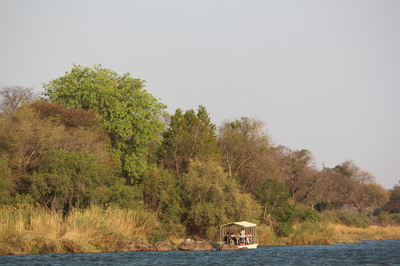

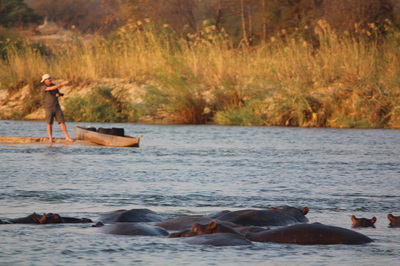
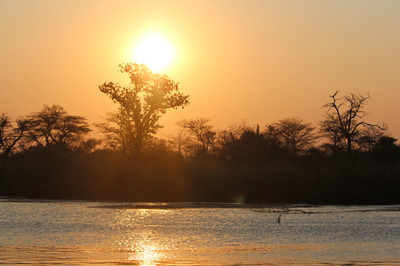
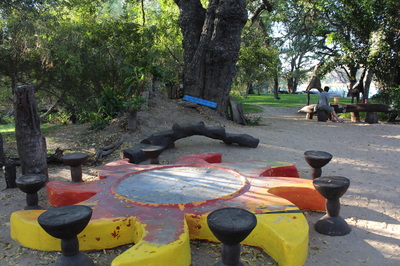
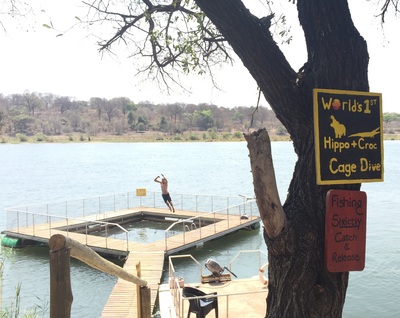



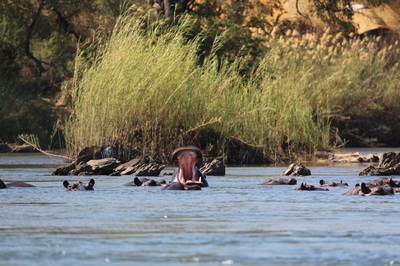
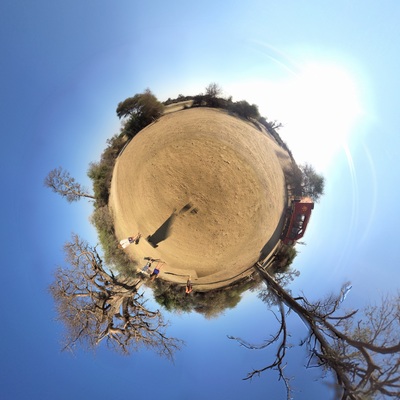
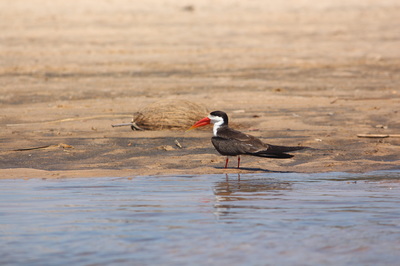

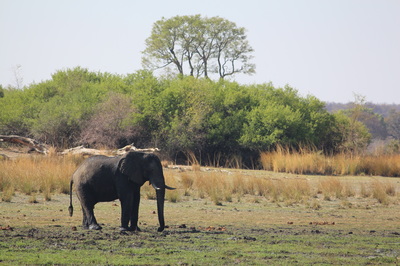

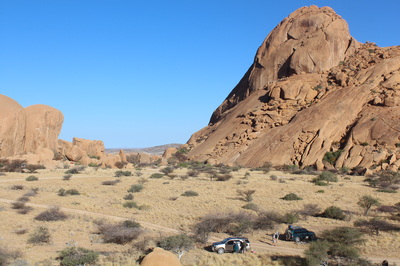


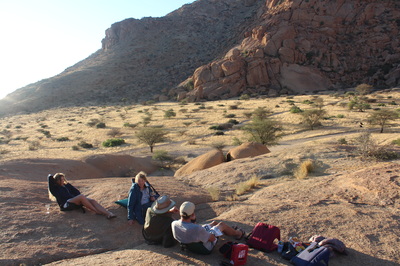


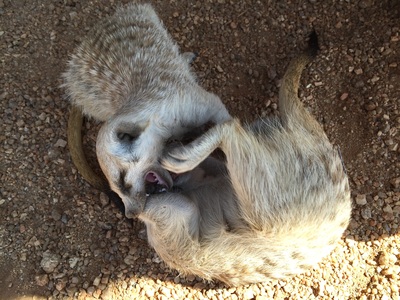
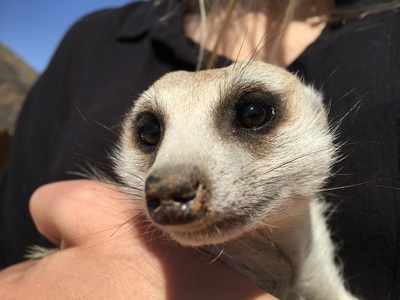


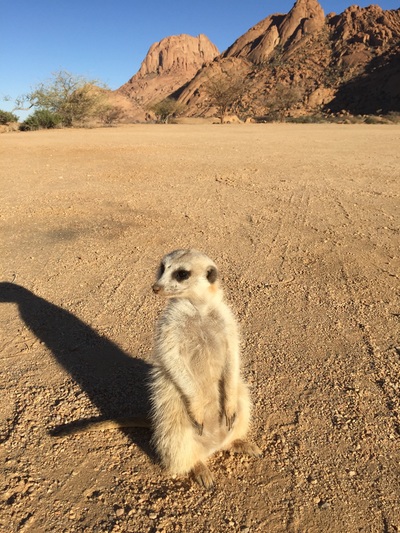
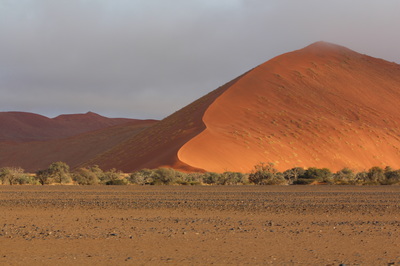
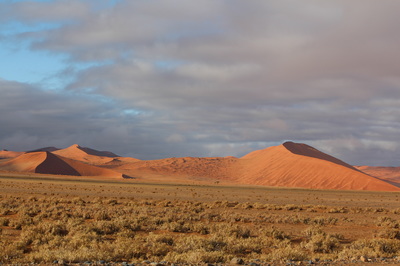
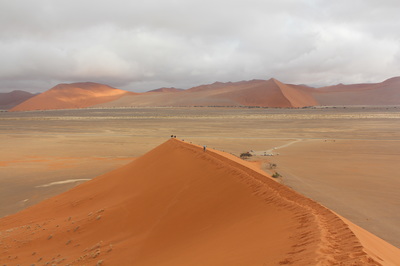

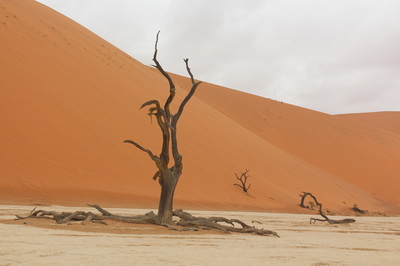

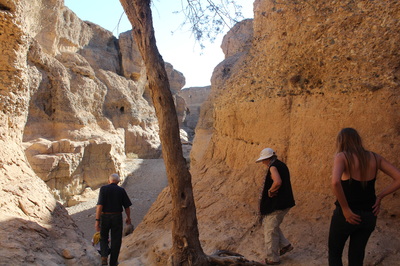

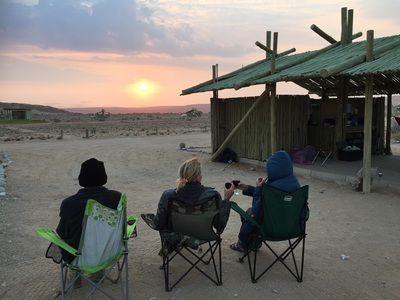
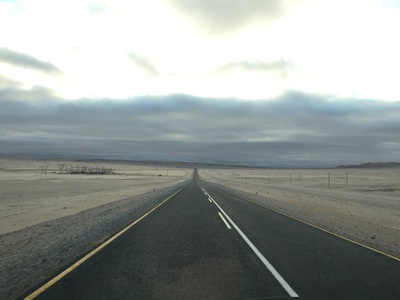
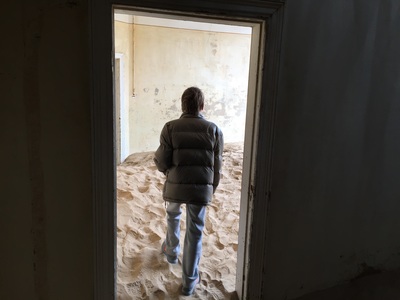

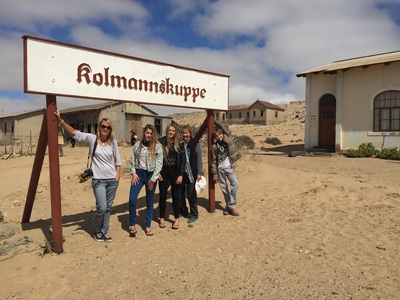
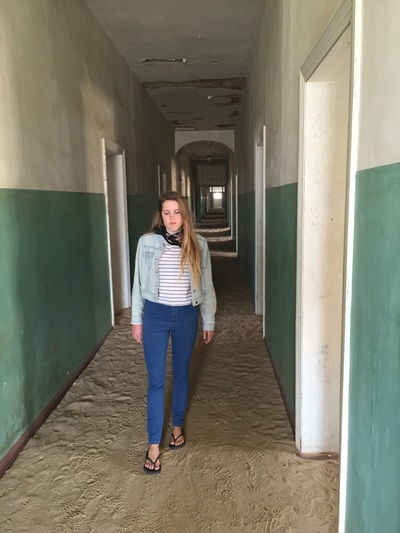


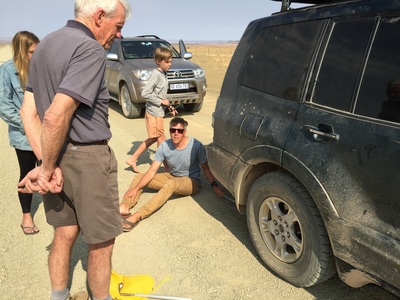





 RSS Feed
RSS Feed
